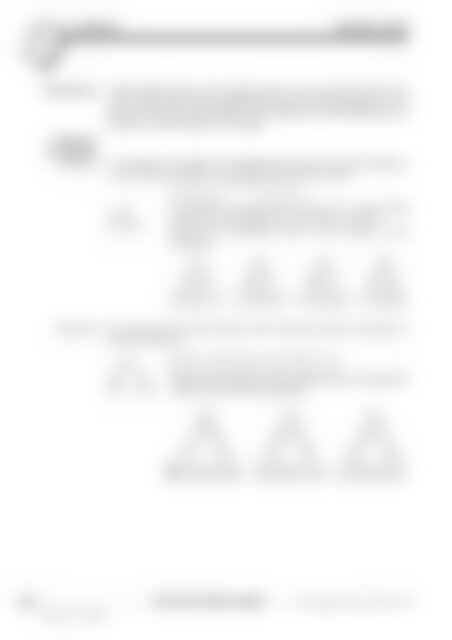RIC-0563 Developing algebraic thinking
Create successful ePaper yourself
Turn your PDF publications into a flip-book with our unique Google optimized e-Paper software.
SHAPES<br />
Teachers notes<br />
Introduction<br />
Shapes begins with a small triangle using only six tiles and ends with Box<br />
Sum, a two-dimensional representation of a cube using eight tiles. The<br />
equations become progressively more difficult to solve simultaneously;<br />
however, several patterns do appear.<br />
Looking at<br />
the Algebra<br />
Triangle 6<br />
In Triangle 6, the algebra is straightforward. Each of the three digits a,<br />
c and e has to be used in two equations as shown below.<br />
a + b + c = c + d + e = e + f + a<br />
a + b = d + e, c + d = f + a<br />
a To create the smallest sum 6, we use 0, 1 and 2 at the<br />
b f vertices; for the largest sum 21 we use 7, 8 and 9.<br />
c d e<br />
Notice the clockwise order of the digits in the<br />
examples.<br />
2<br />
3<br />
5<br />
9<br />
4 3<br />
8 7<br />
8 7<br />
5 4<br />
0 5 1<br />
1 9 2<br />
1 9 2<br />
7 6 8<br />
Triangle 9<br />
For Triangle 9, the three digits in the vertices are again important in<br />
finding a solution.<br />
a<br />
b i<br />
c h<br />
d e f g<br />
a + b + c + d = d + e + f + g = g + h + i + a<br />
a + b + c = e + f + g, d + e + f = a + i + h<br />
Notice the clockwise (or anticlockwise) order of consecutive<br />
digits in the following solutions.<br />
8<br />
1 0<br />
3 5<br />
7 4 2 6<br />
5<br />
8 7<br />
0 2<br />
4 9 1 3<br />
3<br />
4 7<br />
8 6<br />
2 5 9 1<br />
84 DEVELOPING ALGEBRAIC THINKING www.ricgroup.com.au R.I.C. Publications ®<br />
ISBN 978-1-74126-088-5

















